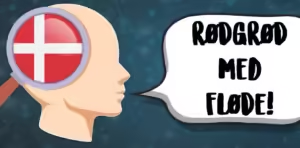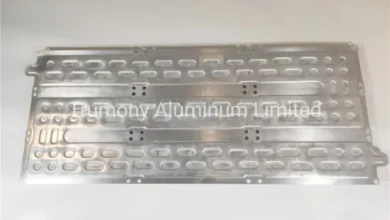Discovering Ruderne: A Glimpse into Danish Plurals

Ruderne is a unique word in Danish that you might find interesting. It’s the definite plural form of “rude,” which means “board” or “pane” in English. If you’re learning Danish or just curious about different languages, understanding words like a can be fun and educational.
In this blog post, we’ll explore what is means and how it fits into Danish grammar. We’ll also look at some examples to help you get a better grasp of this interesting word. Whether you’re a language lover or just starting to learn Danish, this post is for you
What is Ruderne? Understanding the Term
That is a Danish word that means “the panes” or “the boards” when talking about more than one. In Danish, nouns have different forms to show if they are singular or plural. a is the definite plural form, which means it refers to multiple objects that are clearly known in the conversation. For example, if you were talking about several windows, you might use us to describe them.
When learning Danish, understanding terms like a helps you speak and write more accurately. It shows you know how to use words in different forms. Just like in English, where we say “the windows” instead of just “windows,” Danish uses a to be specific about which panes or boards are being talked about.
Ruderne: The Definite Plural of Rude
In Danish, a is the definite plural form of the word “rude.” “Rude” means “pane” or “board” in English, like a glass pane in a window. When you want to refer to more than one pane, you use a The “ne” at the end of the is what makes it a definite plural, showing that you are talking about specific panes or boards.
For example, if you were discussing several windows in a building, you would use ruderne to talk about them specifically. It’s similar to how we use “the windows” in English when we’re being specific about which windows we mean. Knowing how to use a helps in describing things clearly in Danish.
How Ruderne Fits into Danish Grammar
The is an important part of Danish grammar because it shows how plurals work in a definite form. In Danish, when you want to be specific about multiple items, you use the definite plural form, like ruderne. This is different from the indefinite plural form, which would just be “ruder.”
Understanding this grammar rule helps you construct sentences more accurately. For example, instead of saying “some panes,” saying a tells the listener exactly which panes you mean. It’s a small but important detail in learning how to use Danish correctly.
Examples of Ruderne in Sentences
Using us in sentences can help you get a better grasp of how it works. For instance, you might say, “Jeg skal rense the which means “I need to clean the panes.” Here, a is used to specify which panes you are talking about.
Another example could be,a på vinduet er beskidte,” which translates to “The panes on the window are dirty.” By using notes you make it clear that you’re talking about specific panes. Practicing sentences like these can help you understand and use a more effectively in everyday conversation.
Why Learning Words Like Ruderne is Important
Learning words like ruderne is important because they help you understand and use a language more accurately. Knowing how to use definite and indefinite forms correctly makes your speech and writing clearer.
For example, if you’re learning Danish and want to describe several panes of glass, knowing that the is the right word helps you communicate better. It’s similar to learning grammar rules in English; it helps you speak and write more correctly.
Ruderne vs. Rude: What’s the Difference

The and rude are closely related but have different uses. “Rude” is the base word and means “pane” or “board.” When you add “ne” to make a it turns into the definite plural form. This means you are referring to specific panes or boards that have already been mentioned or are known in the conversation.
Understanding the difference between the and rude helps you use Danish more accurately. For example, if you’re talking about panes for a particular window, you’d use us. If you’re speaking generally about panes, you’d just use rude.
Fun Facts About the Word Ruderne
The word ruderne has some interesting features. For one, it shows how Danish uses definite and indefinite forms to convey specific meaning. In English, we don’t always have a separate word for definite plurals, but Danish does, making it unique.
Another fun fact is that learning words like a can help you see how different languages handle grammar. It’s a great way to understand the structure of Danish and how it compares to other languages you might know.
How to Use Ruderne Correctly
Using ruderne correctly is all about knowing when to use it. You use us when you want to be specific about multiple panes or boards. It’s important to remember this when constructing sentences to make sure you’re clear about which items you’re talking about.
For instance, if you’re describing several windows and want to make it clear which ones, using a is the way to go. Practicing with sentences and examples will help you get used to using a correctly.
The History of Ruderne in the Danish Language
Ruderne has been part of the Danish language for a long time. Understanding its history can give you insight into how Danish grammar has evolved. It’s a good example of how languages develop specific rules for clarity.
Studying the history of the helps you appreciate how Danish uses grammatical forms to communicate clearly. It also shows how language rules can change and develop over time.
Common Mistakes with Ruderne
One common mistake with a is using it incorrectly with singular nouns. Since a is a definite plural form, it should only be used when referring to multiple items. Using it with singular nouns, like “rude,” can make sentences unclear
Another mistake is confusing ruderne with the indefinite plural form, which is just “ruder.” Remember, the is used when you need to be specific about which panes or boards you’re talking about, whereas “ruder” is more general.
How Ruderne is Used in Everyday Danish
The is commonly used in everyday Danish conversations, especially when talking about windows or other types of panes. For example, you might use a when discussing cleaning windows or repairing broken panes.
In daily life, knowing how to use a correctly helps you describe specific items more clearly. It’s a useful word to know if you’re living in Denmark or just want to improve your Danish language skills.
Practice Exercises with Ruderne

Practicing with a can help solidify your understanding of this Danish term. Try writing sentences using us to describe different scenarios, like cleaning or fixing panes.
You can also practice by translating sentences from English to Danish, focusing on using ruderne correctly. The more you practice, the more comfortable you’ll become with this and other Danish grammatical forms.
Understanding the Role of Ruderne in Danish Sentences
Ruderne plays a key role in Danish sentences by showing which specific panes or boards are being referred to. It helps make conversations and written text more precise. For example, if you say, “Ruderne i stuen er nye,” it means “The panes in the living room are new.” Here, ruderne is used to specify the exact panes you are talking about, making your meaning clear.
In Danish, using the correct form of a word helps others understand exactly what you are discussing. Just like in English, where “the windows” specifies particular windows, ruderne serves the same purpose. Understanding how to use ruderne helps you communicate more effectively and avoid confusion.
Practical Examples of Ruderne in Daily Life
You might encounter ruderne in various everyday situations, such as when talking about windows or glass panes. For instance, if you’re discussing repairs, you might say, “Jeg skal skifte ruderne i køkkenet,” which means “I need to replace the panes in the kitchen.” Using ruderne in this way helps to clearly indicate which panes need attention.
Another example could be when describing a task, like cleaning. You might say, “Ruderne er meget snavsede,” which translates to “The panes are very dirty.” This usage of ruderne helps you be specific about the panes being cleaned. These practical examples show how ruderne is used in real-life contexts to make communication clearer.
Common Contexts for Using Ruderne
Ruderne is often used in contexts involving windows, mirrors, or any surface that has panes or boards. For example, when discussing a window that needs cleaning, you might say, “Vi skal pudse a i hele huset,” which means “We need to clean the panes throughout the house.” This context shows how a applies to multiple panes in a specific location.
In another common context, you might use us when talking about broken panes. For instance, “Der er en sprække i en af ruderne,” translates to “There is a crack in one of the panes.” Knowing these contexts helps you use a correctly in various situations where panes or boards are involved.
Differences Between Ruderne and Other Danish Plurals
Understanding how a differs from other Danish plurals is important for using the language correctly. While the is the definite plural form, the indefinite plural form would be “ruder.” For instance, you would use a to specify particular panes, like in “Jeg skal måle ruderne,” meaning “I need to measure the panes.”
In contrast, using “ruder” without the definite article makes it less specific. For example, “Der er mange ruder i butikken,” means “There are many panes in the shop,” without specifying which panes. Knowing when to use a helps ensure that you are clear and precise in your communication.
How Learning Ruderne Enhances Danish Vocabulary
Learning words like is can enhance your Danish vocabulary by adding specific terms to your language skills. By understanding and using a you become more familiar with Danish grammar rules, especially those involving plurals and definitions. This adds depth to your vocabulary and improves your overall language proficiency.
Expanding your vocabulary with words like ruderne also helps you become more fluent in Danish. It allows you to describe objects and situations more precisely, which is essential for effective communication. Practicing with a and similar terms can make your Danish learning experience richer and more rewarding.
Using Ruderne in Different Danish Dialects
In various Danish dialects, the usage of ruderne might differ slightly, but the core meaning remains the same. For example, in some regions, you might hear variations in how definiteness is expressed, but the will still be understood to refer to specific panes or boards.
Exploring these regional differences can give you a deeper understanding of how a is used across Denmark. It also helps you become more adaptable in your language skills, whether you’re traveling or interacting with speakers from different areas.
The Impact of Ruderne on Danish Language Learning

The term ruderne has a significant impact on learning Danish as it helps you understand how to use definite plurals. Mastering this term and its usage in sentences contributes to a better grasp of Danish grammar. It also aids in constructing sentences that are more precise and easier to understand.
Understanding how to use us correctly can make learning other Danish terms easier. As you get more comfortable with specific grammatical rules, you’ll find it easier to apply them to new vocabulary. This understanding helps you become more proficient in Danish and improves your overall language skills.
The Importance of Ruderne in Danish Grammar
Ruderne is a vital part of Danish grammar because it helps you describe multiple specific items clearly. In Danish, the definite plural form indicates that you are referring to particular items that are already known. For instance, saying “Jeg ser the i vinduet” means “I see the panes in the window.” Here, a specifies which panes you are talking about.
Using a correctly is crucial for precise communication. It helps you distinguish between general and specific references. Just like in English where you use “the” for specific items, fills serves a similar function in Danish. This makes understanding and using Danish grammar more effective.
Tips for Mastering the Use of Ruderne
Mastering the use of a can be easier with a few practical tips. First, practice using a in different sentences to get comfortable with how it works. For example, you might write, “Ruderne i stuen skal males,” meaning “The panes in the living room need painting.” This helps you understand when and how to use a
Another tip is to read Danish texts that include us This exposes you to real-life examples and reinforces your understanding. Listening to Danish conversations and noting how use is used can also improve your grasp of the term. Consistent practice with these tips helps solidify your knowledge.
Common Mistakes with Ruderne and How to Avoid Them
A common mistake with ruderne is using it with singular nouns. note is specifically for definite plurals, so it should not be used with a single pane. For example, instead of saying a i vinduet er beskadiget” (which would be incorrect if only one pane is damaged), use “Ruden i vinduet er beskadiget” for a single pane.
Another mistake is confusing a with “ruder,” the indefinite plural form. If you are talking about specific panes, always use a To avoid these mistakes, practice identifying when to use definite versus indefinite plurals and apply this knowledge in your writing and speaking.
The Role of Ruderne in Danish Writing and Speech
In Danish writing and speech, ruderne helps convey specific details about multiple items. Whether you are writing an article, a story, or simply having a conversation, using us allows you to be precise. For example, in a description of a room, you might write, the i stuen er lavet af glas,” which means “The panes in the living room are made of glass.”
Using a effectively enhances the clarity of your communication. It ensures that readers and listeners understand exactly which panes or boards you are referring to. This precision is valuable in both formal and informal contexts, making your Danish more accurate and understandable.
Conclusion
The is a helpful Danish word that makes talking about multiple specific panes or boards easier. By learning how to use ruderne, you can clearly describe windows or glass panes in your conversations and writing. It’s like having a special tool in your language toolbox that helps you be more precise.
Using a correctly can make you sound more fluent in Danish and improve your communication skills. Whether you’re talking about home repairs or just describing something, knowing how to use notes will make your Danish clearer and more accurate. So, keep practicing and see how much better your Danish can become




